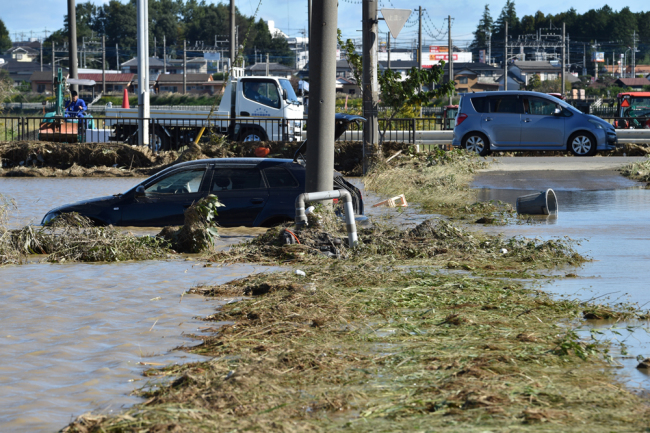At least 19 people have died, and another 16 missing as of 1:30 p.m. local time (0430 GMT) on Sunday as Typhoon Hagibis ripped through Japan, including the Tokyo metropolitan area, leaving more than 140,000 households in Tokyo and regions close by without power.
Meanwhile, some 100 people were injured across the country, according to a Kyodo News tally based on the information provided by rescuers and other authorities, while an NHK tally put the number of injured at 149.
According to the Ministry of Land, Infrastructure, Transport and Tourism, at least 48 landslides and mudflows have been reported in 12 prefectures, and nine rivers burst their banks. Some 27,000 Self-Defense Force personnel have been mobilized for rescue and relief operations across the country.
Nagano Prefecture was one of the hardest-hit areas as the bank of the Chikuma River collapsed, causing massive flooding in residential areas, with officials of the city of Nagano and neighboring cities calling on residents to take the utmost caution for their safety.
The land ministry estimated that some of those areas may see floodwaters of up to five meters deep. Stranded residents were seen waving from a second floor balcony.
Floodwater also engulfed bullet trains parked at East Japan Railway Co.’s rail yard near Nagano Station. According to the company, 10 trains, with a total of 120 carriages, were damaged, which means one-third of its bullet trains used for the Hokuriku Shinkansen line were damaged by flooding.
Japanese Prime Minister Shinzo Abe said the government is setting up an emergency taskforce to get the full picture of the damage from Typhoon Hagibis and to take every possible measure to protect people’s lives.
Rescue personnel use a boat to evacuate people and caregivers from the Kawagoe Kings Garden elderly care centre in Kawagoe city, Saitama prefecture on October 13, 2019. [Cover Image: AFP/Kazuhiro Nogi]




